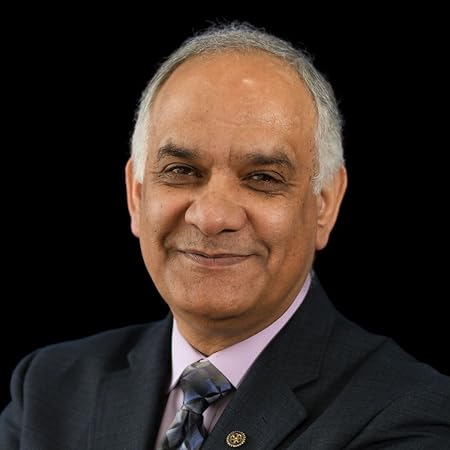If you were to gather together a group of people on the cusp of retirement and ask them their number one concern, odds are most would answer, “Money.” The biggest worry most of us face as we contemplate retirement is the fear that we will outlive our resources. As Rajiv often says, none of us wants to run out of money, become a burden to our families, and end up in a living situation where we’re unhappy.
This week we read this article about retirement finances from Kiplinger which argues that there are a few simple steps anyone can take to regain a sense of control over our money as we age. The article was written by Kelly LaVigne, who is not only an attorney but is also a senior executive with Allianz Life Insurance Company. LaVigne’s financial suggestions may sound simple, but his point is well-taken: sometimes the best way to get back on track is to do the simple things we tend to avoid.
Let’s take a look at the three financial steps LaVigne says are the places to start.
Financial Confidence is Declining After Years of Uncertainty
LaVigne leads off with a classic understatement. “We’ve experienced a lot of financial turmoil in the last five years,” he writes – to which we can only respond, “That’s for sure.”
“With the COVID-19 pandemic, escalating international tensions and historic levels of inflation, you may feel less confident about your finances than you did in the past,” LeVigne goes on. “If so, you’re not alone.” According to the Annual Retirement Study from the Allianz Center for the Future of Retirement, measures of financial confidence have been steadily declining since 2020.
“In 2025,” he writes, “70 percent of Americans said they feel confident about their ability to financially support everything they want to do in life. This is down from 83 percent in January 2020.” He then goes on to suggest what he calls three proactive steps toward building confidence in your long-term financial security.
Get the Right Perspective by Working with a Financial Planner
LaVigne’s first recommendation is to build financial confidence by seeking the right adviser.
“Working with a financial professional can be a key step toward long-term financial security,” LaVigne says. “A financial professional can help you outline your goals and action steps to achieve them — ultimately increasing your confidence in your finances. A financial professional will also help you avoid making financial mistakes out of emotion or fear.”
Ironically, though, relatively few Americans are working with a financial professional, even though most people agree that the right planner is a top source for financial guidance. According to the Kiplinger article, just 38 percent of Americans are currently working with a financial professional.
Take the Time to Find the Right Planner for You
Finding the right financial professional is daunting. In fact, we presented this helpful article about choosing a financial planner here on the Blog just a few weeks ago.
LaVigne agrees that the process take time and effort. “You may need to interview a few before finding one who is ready to help you with your specific needs — whether it’s budgeting, investment advice, retirement planning or tax strategies,” he writes. “Treat those initial meetings with financial professionals like a job interview to help find a good fit for both personality and your financial situation.”
One tool Rajiv Nagaich strongly recommends is a financial dashboard, something your financial planner should be able to help you create. This tool will allow you to develop and maintain a long-term view of your finances while allowing you to look at a wide range of “what-if” scenarios to account for unforeseen circumstances.
As LaVigne writes, the right planner with the right tools “will help bolster your confidence in your strategy.”
Document Your Long-Term Financial Plan
Point number two, says LaVigne: your long-term plan needs to be documented in tangible form. Translation: write it down.
“With the guidance of a financial professional on your side, it’s time to get down to work,” he writes. “One key way to bolster your confidence is to document your long-term financial strategy. You need to know where you are going in order to feel confident in your ability to get there.”
LaVigne points out another inconsistency in American thinking. While almost all Americans say they agree that setting financial goals and developing a plan to reach them is important and desirable, nearly half (47 percent) have no written financial plans.
As LaVigne argues, there is power in specificity. “Identifying financial goals and laying out a plan to achieve them requires getting specific about what you want from life,” he states. “It means breaking down large, abstract goals like ‘save enough for a comfortable retirement’ into what a comfortable retirement looks like for you and the funds you will need to make it a reality.”
This need to move from the general to the specific, says LaVigne, is why writing down your goals and necessary steps “will help cut through the clutter and prioritize your finances.”
Implement a Strategy to Manage Financial Risks
In his third and final point, LaVigne returns to his original statement: people are stressed out by a wide range of financial and societal risk factors beyond their control. Addressing that stress head-on is one sure way to build financial confidence.
“Inflation, the 2033 insolvency of the Social Security trust fund and the possibility of rising taxes are among the risks contributing to Americans’ concerns about their financial futures,” he states. “While you cannot control these risks, you can incorporate a level of protection into your financial plan to address them.”
A strong financial strategy can help ensure that your retirement savings will last throughout your lifetime. LaVigne offers a few possible ideas:
Annuities: “Adding an annuity to your portfolio that can offer guaranteed, and potentially increasing, income,” he advises.
Investing: LaVigne says you might consider adding secure investments to your portfolio, such as dividend-paying stocks, U.S. Treasury inflation-protected securities (TIPS) or I-bonds.
Social Security: There are many Social Security claiming strategies, LaVigne observes, so choose the one that maximize benefits for you and your spouse over the long haul.
Health Savings Account: Using health savings accounts (HSAs) for health care expenses can bring significant tax advantages.
Roth Conversion: LaVigne says you may want to explore converting pre-tax money in a retirement plan or IRA into a Roth IRA. You’ll pay income taxes now but save tax dollars in the future when you make withdrawals.
Financial Confidence Doesn’t Have to be Elusive
LaVigne ends by reminding us that we can rebuild financial confidence by taking control of our situation and refusing to be passive or pessimistic.
“Even with ongoing challenges in recent years,” he concludes, “you still have opportunities to build back financial confidence. By working with a financial professional, creating a written financial plan and incorporating risk management, you can put in the work to improve your financial confidence. Taking action can help you navigate uncertainties and secure your financial journey.”
Rajiv Nagaich – Your Retirement Planning Coach and Guide
The long-awaited book by Rajiv Nagaich, called Your Retirement: Dream or Disaster, has been released and is now available to the public. Retirement: Dream or Disaster joins Rajiv’s ground-breaking DVD series and workbook, Master Your Future, as a powerful planning tool in your retirement toolbox. As a friend of AgingOptions, we know you’ll want to get your copy and spread the word.
You’ve heard Rajiv say it repeatedly: 70 percent of retirement plans will fail. If you know someone whose retirement turned into a nightmare when they were forced into a nursing home, went broke paying for care, or became a burden to their families – and you want to make sure it doesn’t happen to you – then this book is must-read.
Through stories, examples, and personal insights, Rajiv takes us along on his journey of expanding awareness about a problem that few are willing to talk about, yet it’s one that results in millions of Americans sleepwalking their way into their worst nightmares about aging. Rajiv lays bare the shortcomings of traditional retirement planning advice, exposes the biases many professionals have about what is best for older adults, and much more.
Rajiv then offers a solution: LifePlanning, his groundbreaking approach to retirement planning. Rajiv explains the essential planning steps and, most importantly, how to develop the framework for these elements to work in concert toward your most deeply held retirement goals.
Your retirement can be the exciting and fulfilling life you’ve always wanted it to be. Start by reading and sharing Rajiv’s important message. And remember, Age On, everyone!
(originally reported at www.kiplinger.com)


